Snowmobiling’s Generation Next

The times they are a changin'
Many of us — oh, heck, most us! — snowmobile old-timers frequently don’t understand how our sport looks to up-and-coming generations. It wasn’t until Wisconsin-based Beloit College published its annual “Mindset List” for the Class of 2014 that we even considered how snowmobiling might be construed by that youthful generation. We kinda take for granted that all snowmobilers know what we know and had similar experiences and understandings. But, that is not the case at all. Future generations of snowmobilers will look at the sport quite differently than we do. That may be good. Or it may be quite the opposite. But it will most decidedly be different and based on their collective life experiences, which will have been very different than ours.
Beloit College’s Mindset List provides a snapshot of the worldview of college-age freshmen that would have been born in 1992. That alone is frightening, but the experiences that have shaped them to this point are interesting to consider.
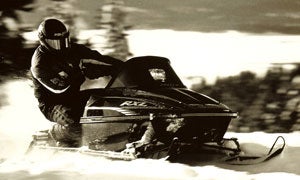 In 1992 Polaris RXL was the only triple with electronic fuel injection.
In 1992 Polaris RXL was the only triple with electronic fuel injection.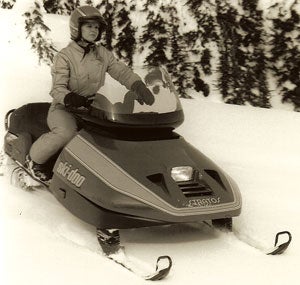 By the time Generations Next was born, the Ski-Doo Stratos with its strut suspension was a memory.
By the time Generations Next was born, the Ski-Doo Stratos with its strut suspension was a memory.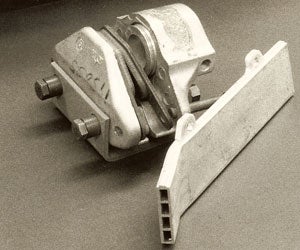 Liquid-cooled braking was a big deal when the class of 2014 came into the world.
Liquid-cooled braking was a big deal when the class of 2014 came into the world.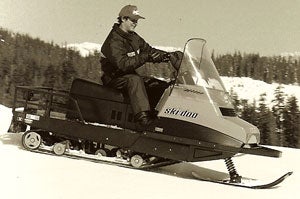 Ski-Doo’s Alpine was a grunt worker on ski slopes and for grooming feeder trails. In some places it still is.
Ski-Doo’s Alpine was a grunt worker on ski slopes and for grooming feeder trails. In some places it still is.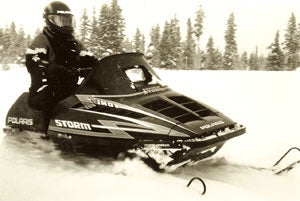 Polaris failed to take the sport by Storm in the early 1990s.
Polaris failed to take the sport by Storm in the early 1990s.Consider that these young people use their cell phones to tell them the time of day instead of wristwatches. Their computers have always housed a CD-ROM drive, no floppies for them. And their first computer experience, the Apple II, is a museum piece.
Their hygiene habits have always included using toothpaste that stands on its cap. Their food is irradiated and they know no different. Barney is a purple dinosaur, not a Mayberry deputy. They know Beethoven to be a dog of film, not a classic music genius. And they know the lingo of the barista — latte, venti cappuccino — and probably not the terminologies of the auto mechanic.
When it comes to snowmobiling, there have always been only four major manufacturers. John Deere has always been an agri-giant and Kawasaki and Harley-Davidson only make motorcycles.
When this group was born, Polaris was the worldwide leader in sled sales and was the only snowmobile company to offer a high performance, three-cylinder, electronically fuel injected sled. And the Minnesota snowmobile pioneer also offered a 500cc model with EFI. But the engine was a Fuji-built Twin, not a Polaris Liberty model.
Arctic Cat’s Thundercat referred to a 900cc torque-beast of a sled, not an ATV. The Ski-Doo Stratos with its strut front suspension was faded or fading as was Yamaha’s telescopic strut front design.
But, sled sales were low in those days as well. Annual sales were around 150,000 units in 1992, but would peak at just more than 260,00 five years later. A top of the line 1992 speed sled sold for less than US$8,500, but we thought it was quite “spendy” in those days. Today’s young riders have to fork over upwards of US$15,000 for the top of the line models. These are the folks who think an Indy Storm is a “vintage” snowmobile. What is a Ski-Doo Alpine single-ski, twin–tracked utility sled?
This generation has always had heated handlebars. Engines have been liquid-cooled. They’d have no idea that Jim Adema wrapped a water jacket around an air-cooled Yamaha to give his 1970s Sno-Jet racer an edge back in the early days of racing. That edge proved to his competition that liquid cooling was the way of the future.
This new generation of riders simply accepts four-stroke snowmobiles, as they didn’t have to fight the battles many of us fought with weight and lack of performance from those early industrial-type motors. They assume that Yamaha has pretty much always been the four-stroke leader and that the Japanese-company has always been in the forefront of that technology. Would they know about the world-beater two-strokers that Yamaha raced on dirt, asphalt and snow?
For that matter, as far as they would be concerned, Arctic Cat and Polaris have always been ATV companies first and sled builders as an afterthought. They know Can-Am as an ATV, not a tricked out dirt bike brand.
Who are Edgar Hetteen and David Johnson? Those founders of Polaris were contemporaries of Laurent Beaudoin, the man who took Ski-Doo from a snowmobile maker to a world leader in the transportation industry, including aerospace and high-tech trains. But Laurent Beaudoin is known to older generation sledders as the man who pushed for trail development, recognizing that without trails there would be no recreational snowmobile sales.
That leads us to ask, what experience will this new generation have that will make them supporters and caretakers of snowmobiling’s life blood, its trail system? They can tell time without a wrist watch, but time will not stand idly by as trails deteriorate and shrink without the care and support that clubs and state associations provide to keep them relevant in this ever changing world. Will this generation want to continue supporting this sport? How can this challenge be met?
This is an interesting time we live in. It is somewhat similar to a time 100 years earlier when technologies changed the world. Then we went from horses and buggy whips to automobiles and rubber-tired wheels. Telephones were introduced, but they had wires that needed to be strung, much like snowmobiles need trails to be created and maintained. We had electric cars a hundred years ago. Hey, there were steam-powered ones, too! Times were moving fast and the class of 1914 was faced with challenges much like the class of 2014. Not everything was a success. Let’s hope that our sport of snowmobiling proves to be a relevant recreation to the generation ahead. Remember, this is the generation that only knows Clint Eastwood as a movie director. We know him as Dirty Harry. Here’s hoping that the class of 2014 will make snowmobiling’s day!








 Your Privacy Choices
Your Privacy Choices